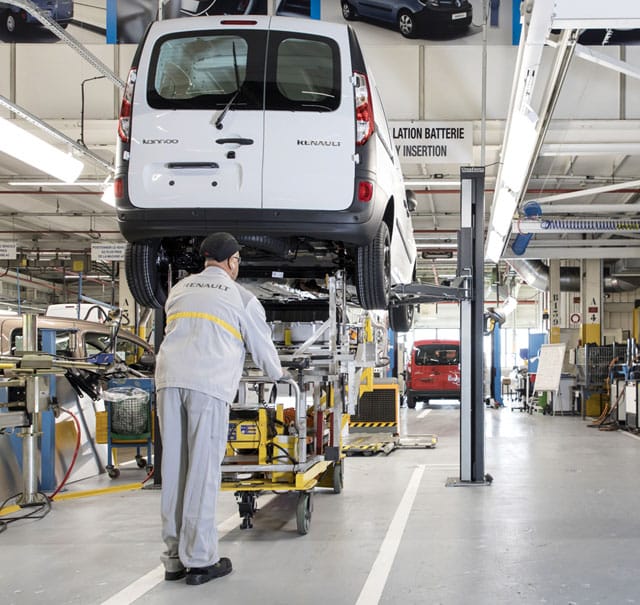Digital Transformation at Groupe Renault
Groupe Renault on the Path Towards a Smart Factory
Groupe Renault
Groupe Renault's plan is to implement the use of OPC UA-enabled devices and equipment at all production sites worldwide, and to implement end-to-end data communication from the sensor to the machines to the cloud and back again using the OPC UA communication standard. Today, OPC UA is already being used in 17 of the 38 production sites with a total of 3,300 OPC UA-enabled devices.
The start of digital transformation at Groupe Renault began as early as 2016 at the Valladolid plant in Spain. Numerous digital pilot projects of an initiatory nature were launched there for the automobile production of the French automotive group. Other production sites in Turkey and Romania also began focusing on digital projects at almost the same time.
In 2017, Renault had already recognized that the OPC UA communication standard offered the necessary prerequisite for the efficient networking of data from a wide range of different machines and operating systems. The integration of OPC UA-capable components and systems has been actively pushed forward ever since.

The control, optimization and profitability of multi-site manufacturing, based on secure real time data, represents the future of automotive production.

Objectives on the Path to Digitalization
A group of OT, IT, equipment and software experts defined five concrete objectives for the digital transformation of automotive production for the entire Groupe Renault in 2017. These objectives included a connected workforce, real-time data-driven operations, Process 4.0, flexible supply chains and systems, and the complete traceability of components.
Turning the vision of intelligent automotive production into reality was the ambitious future scenario. M2M communication, cloud applications, Big Data, and machine learning were as much a part of the vision as AI and digital twins.
Hurdles on the Path to Digitalization
Highly specialized production systems are used in the automotive industry. Groupe Renault uses different assembly systems, maintenance systems, test systems, automatic welding machines, and industrial robots, each of which has specific operating systems. Some systems have been in use as legacy systems since the 1980s.
A major challenge at the start of the digitalization initiative in 2016 and 2017 was, therefore, the lack of interoperability between systems. Networking the established plants with different operating systems could not be implemented easily. Furthermore, interoperable interfaces had to be integrated and a uniform data structure and communication protocols had to be developed so that production could access standardized data.
At the beginning, the vision of the smart factory and profitability was primarily characterized by the search for the appropriate IT architecture. Groupe Renault decided to build the digitalization of production on the foundation of OPC UA technology and the OPC UA-based Companion Specifications. In addition to this, Groupe Renault has also developed its own data model for various different processes.






